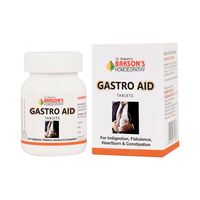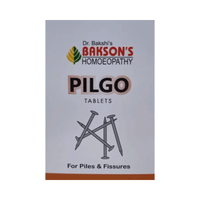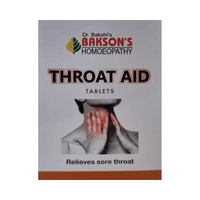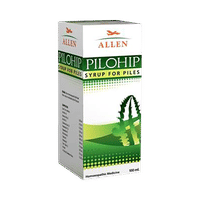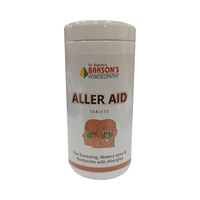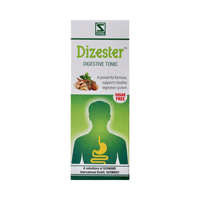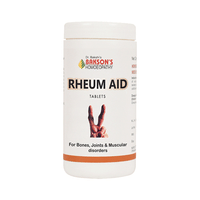Bakson's Homoeopathy Pilgo Tablet
(200 tablets in bottle)
Rs. 433
Rs. 469
8% off
Rs. 433
Rs. 469
8% off
Available in other variants
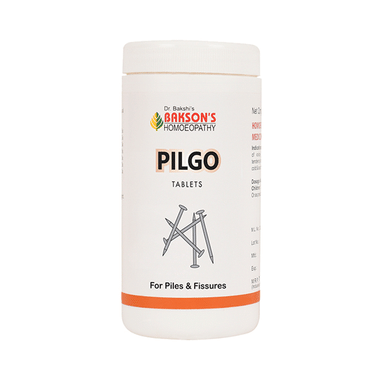
Product Details
Bakson's Homoeopathy Pilgo Tablet
Baksons Homoeopathy Pilgo Tablet is a homoeopathic tablet formulation containing a blend of Ratanhia, Hamamelis virginica, Aesculus hippocastanum, and Aloe socotrina. Ratanhia may help support relief from anal discomfort, Hamamelis virginica can help support soothing of irritation, while Aesculus hippocastanum may help maintain venous health. The combination of these ingredients can help support bowel regularity and manage associated pain and irritation.
Key Ingredients:
Ratanhia 2x,Hamamelis virginica 2x,Aesculus hippocastanum 3x,Aloe socotrina 3x,Excipients q.s. to 100%
Key Benefits:
Net Quantity:
200 N
Indications:
["Anorectal concerns", "Constipation", "Backache", "Irritation due to worms"]
Area Of Application:
Anorectal concerns, Constipation, Backache, Irritation due to worms
Dosage:
1 Tablet three times a day for 4 days, when bleeding stops take 1 Tablet twice a day for 3–6 months or as prescribed by the physician
Directions For Use:
Safety Information:
Baksons Homoeopathy Pilgo Tablet is a homoeopathic tablet formulation containing a blend of Ratanhia, Hamamelis virginica, Aesculus hippocastanum, and Aloe socotrina. Ratanhia may help support relief from anal discomfort, Hamamelis virginica can help support soothing of irritation, while Aesculus hippocastanum may help maintain venous health. The combination of these ingredients can help support bowel regularity and manage associated pain and irritation.
Key Ingredients:
Ratanhia 2x,Hamamelis virginica 2x,Aesculus hippocastanum 3x,Aloe socotrina 3x,Excipients q.s. to 100%
Key Benefits:
- Anal Comfort: Ratanhia may help support relief from discomfort and pain in anal region
- Soothing Irritation: Hamamelis virginica can help support management of irritation and inflammation
- Venous Health: Aesculus hippocastanum may help support healthy venous function
- Bowel Regularity: The combination of actives can help support proper bowel function and manage recurrence of discomfort
Net Quantity:
200 N
Indications:
["Anorectal concerns", "Constipation", "Backache", "Irritation due to worms"]
Area Of Application:
Anorectal concerns, Constipation, Backache, Irritation due to worms
Dosage:
1 Tablet three times a day for 4 days, when bleeding stops take 1 Tablet twice a day for 3–6 months or as prescribed by the physician
Directions For Use:
- 1 Tablet three times a day for 4 days, when bleeding stops take 1 Tablet twice a day for 3–6 months to counter tendency for Piles
- Or as prescribed by the physician
Safety Information:
- Read the label carefully before use
- For more details please read the enclosed leaflet
- Do not exceed the recommended dosage
- Store in a cool dry place away from direct sunlight
- Keep out of reach of children
- Replace cap immediately after use
- Protect from heat, moisture, and direct sunlight













